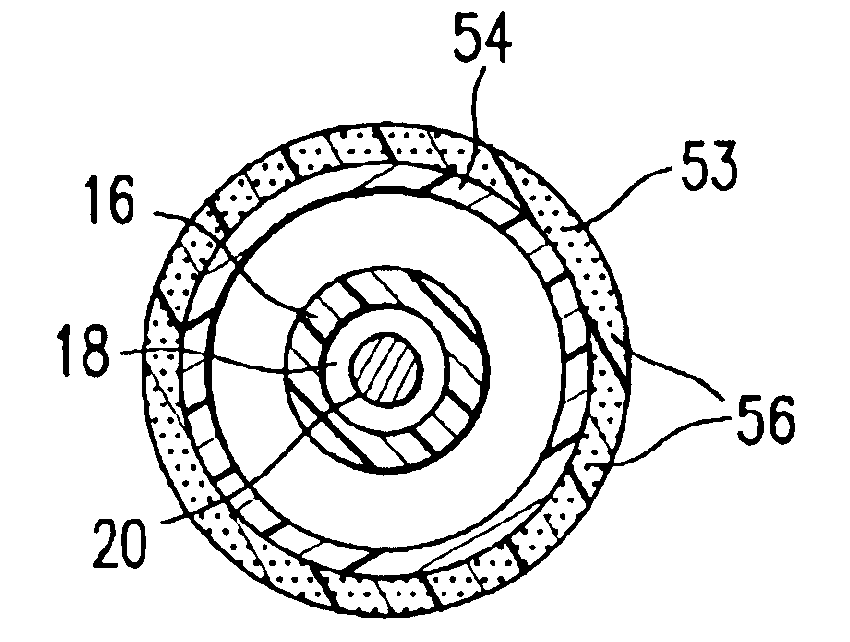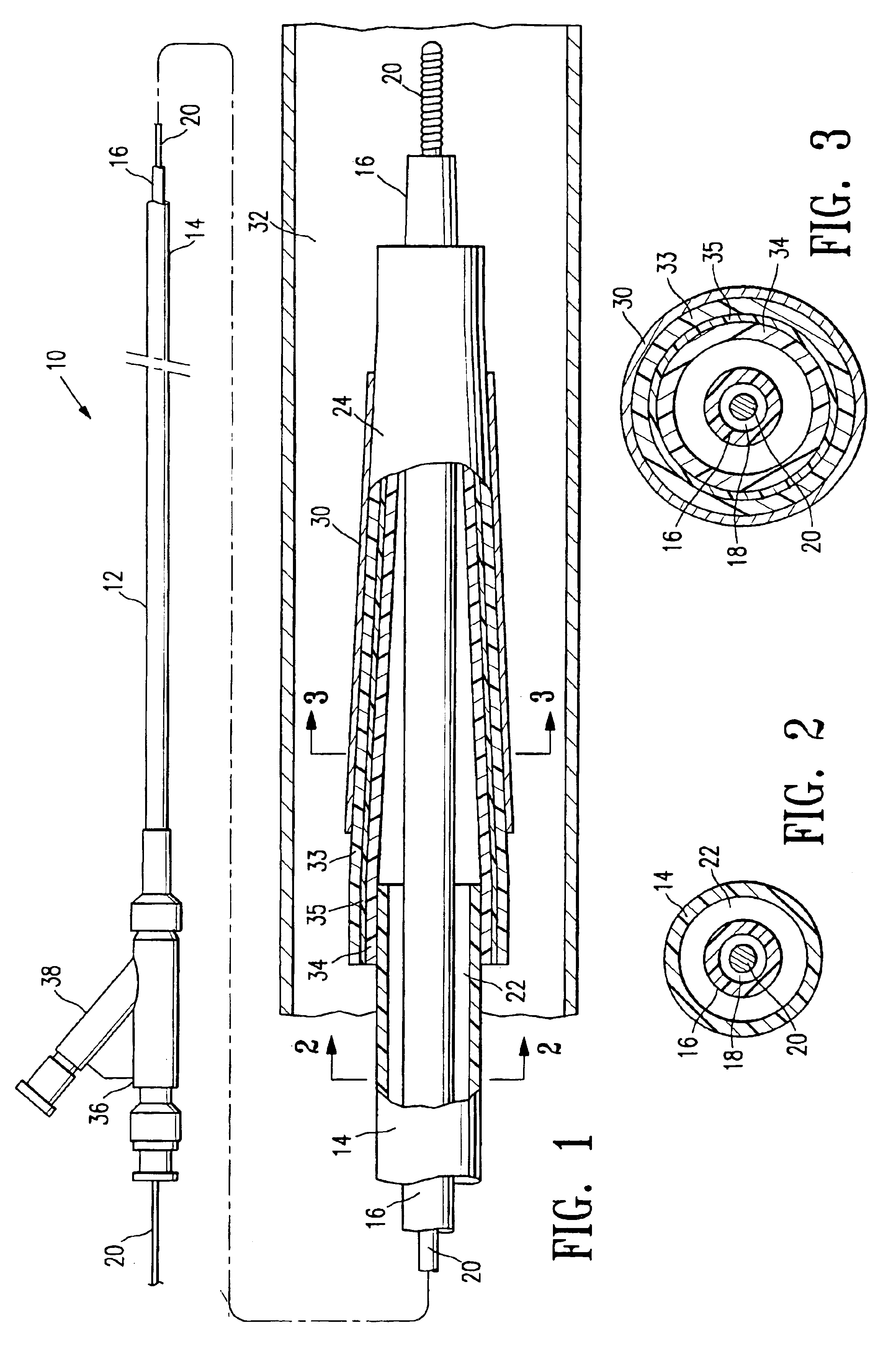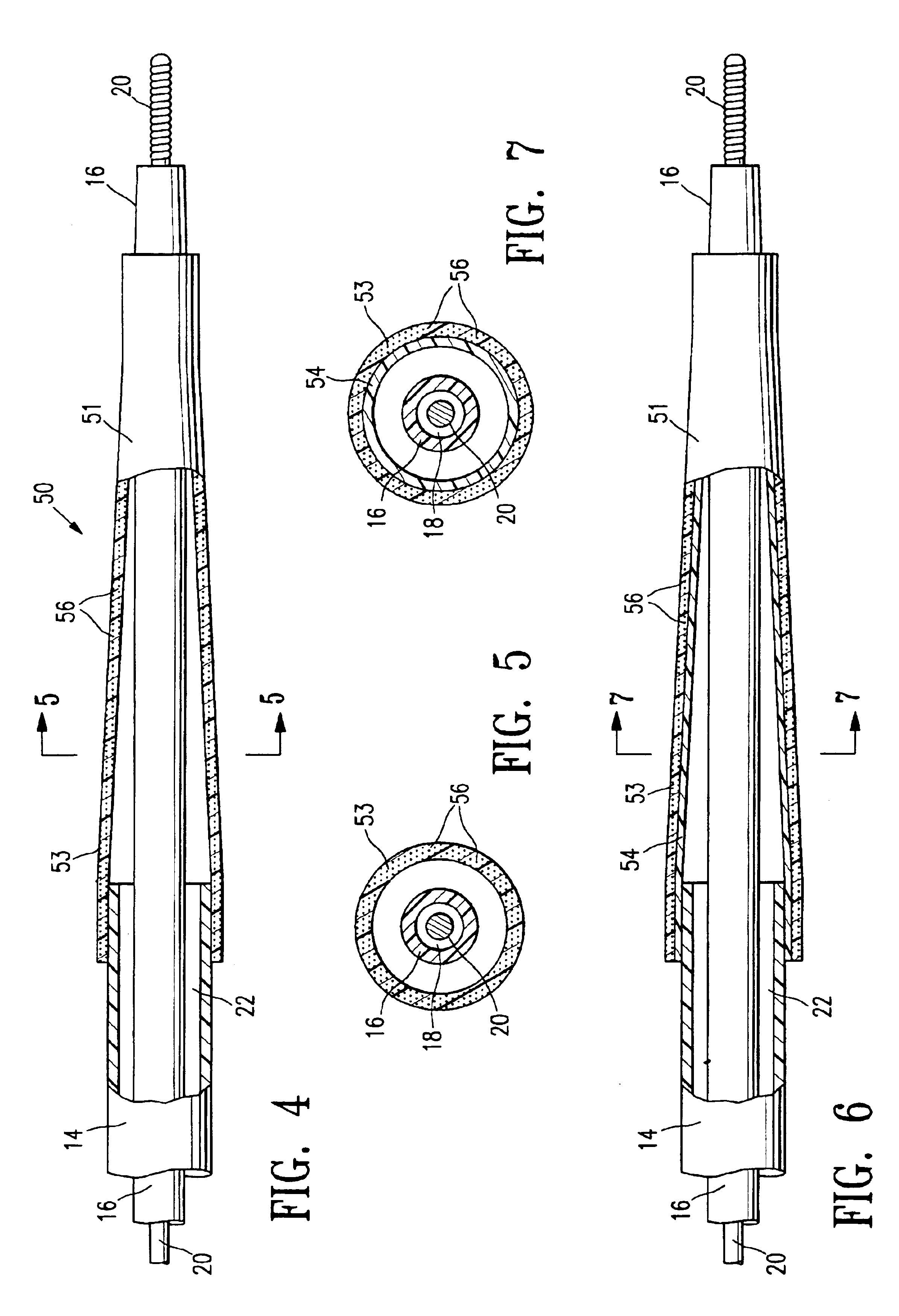Catheter balloon formed of ePTFE and a diene polymer
a polymer and diene technology, applied in the field of medical devices, can solve the problems of fusion bonding of dissimilar materials to substrate materials that can be extremely difficult, trauma to the vessel wall, etc., and achieve the effects of improving performance characteristics, low profile deflated configuration, and high strength
- Summary
- Abstract
- Description
- Claims
- Application Information
AI Technical Summary
Benefits of technology
Problems solved by technology
Method used
Image
Examples
example i
[0043]Catheter balloons were prepared having a first layer of ePTFE with a plasma polymerized acrylic acid functionality (i.e., bondable material), and a second layer of a diene polymer and AMBT (i.e., a bonding promoter), as follows. 30 grams of Kraton 1611K styrene-isoprene-styrene block copolymer was mixed in 166 grams of THF, and to this mixture was added 0.92 grams of 6-amino 2-mercaptobenzothiazole (AMBT) from Aldrich. The solution was put on an agitator for 12 hours to ensure the formation of a uniformly dissolved solution. A Teflon coated mandrel having an outer diameter of about 0.026 inches was dip coated with the solution, and dried, and the resulting coating was removed from the mandrel, to produce a tube formed of the diene-AMBT mixture having an inner diameter of about 0.026 inch and an outer diameter of about 0.032 inch. The length of the diene-AMBT tube was trimmed to about 2 inches, and the diene-AMBT tube was placed over a balloon catheter shaft in preparation for ...
example ii
[0046]Catheter balloons were prepared having a first layer of ePTFE impregnated with a diene-AMBT mixture (i.e., a bondable material), and a second layer of a diene polymer and AMBT (i.e., a bonding promoter), as follows. Diene-AMBT tubes were made using the dip coat method set forth above in Example I. A portion of the Kraton / THF / AMBT solution prepared was taken and diluted with THF in a 1:1 ratio to produce a solution having about 7.5% by weight of Kraton dissolved in THF. A 0.034 inch Teflon mandrel wet with the Kraton / THF / AMBT solution was slid into the inner lumen of a ePTFE tube, to expose the ePTFE tube to the solution. Uniform coating was produced by manually pressing the ePTFE tube along the entire length onto the mandrel to ensure good contact. The mandrel was removed and dry nitrogen at less than 20 psi was blown through the inner lumen of the ePTFE tube to evaporate the solvent. The Kraton / AMBT mixture is believed to form an interpenetrating network through the pores of ...
PUM
| Property | Measurement | Unit |
|---|---|---|
| elongation | aaaaa | aaaaa |
| tensile strength | aaaaa | aaaaa |
| pressures | aaaaa | aaaaa |
Abstract
Description
Claims
Application Information
 Login to View More
Login to View More - R&D
- Intellectual Property
- Life Sciences
- Materials
- Tech Scout
- Unparalleled Data Quality
- Higher Quality Content
- 60% Fewer Hallucinations
Browse by: Latest US Patents, China's latest patents, Technical Efficacy Thesaurus, Application Domain, Technology Topic, Popular Technical Reports.
© 2025 PatSnap. All rights reserved.Legal|Privacy policy|Modern Slavery Act Transparency Statement|Sitemap|About US| Contact US: help@patsnap.com



